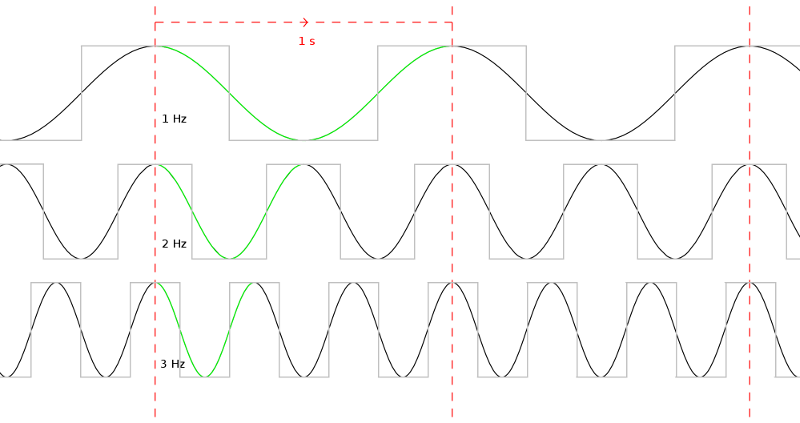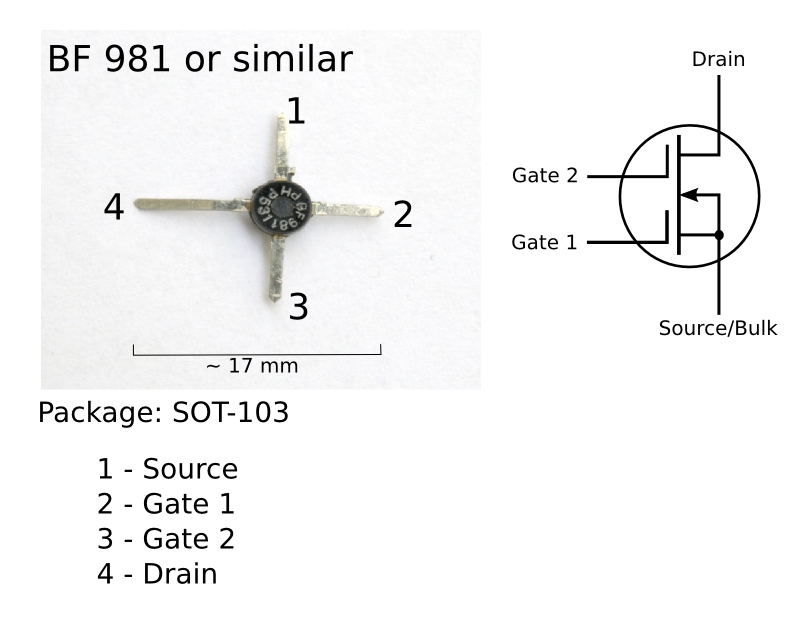|
Gracemont (microarchitecture)
Gracemont is a microarchitecture for low-power processors used in systems on a chip (SoCs) made by Intel, and is the successor to Tremont. Like its predecessor, it is also implemented as low-power cores in a hybrid design of the Alder Lake, Raptor Lake and Raptor Lake Refresh processors. Design Gracemont is the fourth generation out-of-order low-power Atom microarchitecture, built on the Intel 7 manufacturing process. The Gracemont microarchitecture has the following enhancements over Tremont: * Level 1 cache per core: ** eight-way-associative 64KB instruction cache ** eight-way-associative 32KB data cache * New On-Demand Instruction Length Decoder * Instruction issue increased to five per clock (from four) * Instruction retire increased to eight per clock (from seven) * Execution ports (functional units) there are now 17 (from eight) * Reorder buffer increased to 256 entries (from 208) * Improved branch prediction * Support for AVX, AVX2, FMA3 and AVX-VNNI instruct ... [...More Info...] [...Related Items...] OR: [Wikipedia] [Google] [Baidu] [Amazon] |
Intel
Intel Corporation is an American multinational corporation and technology company headquartered in Santa Clara, California, and Delaware General Corporation Law, incorporated in Delaware. Intel designs, manufactures, and sells computer components such as central processing units (CPUs) and related products for business and consumer markets. It is one of the world's List of largest semiconductor chip manufacturers, largest semiconductor chip manufacturers by revenue, and ranked in the Fortune 500, ''Fortune'' 500 list of the List of largest companies in the United States by revenue, largest United States corporations by revenue for nearly a decade, from 2007 to 2016 Fiscal year, fiscal years, until it was removed from the ranking in 2018. In 2020, it was reinstated and ranked 45th, being the List of Fortune 500 computer software and information companies, 7th-largest technology company in the ranking. It was one of the first companies listed on Nasdaq. Intel supplies List of I ... [...More Info...] [...Related Items...] OR: [Wikipedia] [Google] [Baidu] [Amazon] |
VT-d
x86 virtualization is the use of hardware-assisted virtualization capabilities on an x86/x86-64 CPU. In the late 1990s x86 virtualization was achieved by complex software techniques, necessary to compensate for the processor's lack of hardware-assisted virtualization capabilities while attaining reasonable performance. In 2005 and 2006, both Intel ( VT-x) and AMD (AMD-V) introduced limited hardware virtualization support that allowed simpler virtualization software but offered very few speed benefits. Greater hardware support, which allowed substantial speed improvements, came with later processor models. Software-based virtualization The following discussion focuses only on virtualization of the x86 architecture protected mode. In protected mode the operating system kernel runs at a higher privilege such as ring 0, and applications at a lower privilege such as ring 3. In software-based virtualization, a host OS has direct access to hardware while the guest OSs have limited a ... [...More Info...] [...Related Items...] OR: [Wikipedia] [Google] [Baidu] [Amazon] |
Clock Rate
Clock rate or clock speed in computing typically refers to the frequency at which the clock generator of a processor can generate pulses used to synchronize the operations of its components. It is used as an indicator of the processor's speed. Clock rate is measured in the SI unit of frequency hertz (Hz). The clock rate of the first generation of computers was measured in hertz or kilohertz (kHz), the first personal computers from the 1970s through the 1980s had clock rates measured in megahertz (MHz). In the 21st century the speed of modern CPUs is commonly advertised in gigahertz (GHz). This metric is most useful when comparing processors within the same family, holding constant other features that may affect performance. Determining factors Binning Manufacturers of modern processors typically charge higher prices for processors that operate at higher clock rates, a practice called binning. For a given CPU, the clock rates are determined at the end of the manufact ... [...More Info...] [...Related Items...] OR: [Wikipedia] [Google] [Baidu] [Amazon] |
Tri-gate Transistor
A multigate device, multi-gate MOSFET or multi-gate field-effect transistor (MuGFET) refers to a metal–oxide–semiconductor field-effect transistor (MOSFET) that has more than one gate on a single transistor. The multiple gates may be controlled by a single gate electrode, wherein the multiple gate surfaces act electrically as a single gate, or by independent gate electrodes. A multigate device employing independent gate electrodes is sometimes called a multiple-independent-gate field-effect transistor (MIGFET). The most widely used multi-gate devices are the FinFET (fin field-effect transistor) and the GAAFET (gate-all-around field-effect transistor), which are non-planar transistors, or 3D transistors. Multi-gate transistors are one of the several strategies being developed by MOS semiconductor manufacturers to create ever-smaller microprocessors and memory cells, colloquially referred to as extending Moore's law (in its narrow, specific version concerning density scaling, ... [...More Info...] [...Related Items...] OR: [Wikipedia] [Google] [Baidu] [Amazon] |
System On A Chip
A system on a chip (SoC) is an integrated circuit that combines most or all key components of a computer or Electronics, electronic system onto a single microchip. Typically, an SoC includes a central processing unit (CPU) with computer memory, memory, input/output, and computer data storage#Secondary storage, data storage control functions, along with optional features like a graphics processing unit (GPU), Wi-Fi connectivity, and radio frequency processing. This high level of integration minimizes the need for separate, discrete components, thereby enhancing Performance per watt, power efficiency and simplifying device design. High-performance SoCs are often paired with dedicated memory, such as LPDDR, and flash storage chips, such as Universal Flash Storage, eUFS or eMMC, which may be stacked directly on top of the SoC in a Package on a package, package-on-package (PoP) configuration or placed nearby on the motherboard. Some SoCs also operate alongside specialized chips, such ... [...More Info...] [...Related Items...] OR: [Wikipedia] [Google] [Baidu] [Amazon] |
L2 Cache
A CPU cache is a hardware cache used by the central processing unit (CPU) of a computer to reduce the average cost (time or energy) to access data from the main memory. A cache is a smaller, faster memory, located closer to a processor core, which stores copies of the data from frequently used main memory locations. Most CPUs have a hierarchy of multiple cache levels (L1, L2, often L3, and rarely even L4), with different instruction-specific and data-specific caches at level 1. The cache memory is typically implemented with static random-access memory (SRAM), in modern CPUs by far the largest part of them by chip area, but SRAM is not always used for all levels (of I- or D-cache), or even any level, sometimes some latter or all levels are implemented with eDRAM. Other types of caches exist (that are not counted towards the "cache size" of the most important caches mentioned above), such as the translation lookaside buffer (TLB) which is part of the memory management unit (MMU) whic ... [...More Info...] [...Related Items...] OR: [Wikipedia] [Google] [Baidu] [Amazon] |
7 Nm Process
In semiconductor manufacturing, the "7 nm" process is a term for the MOSFET technology node following the "10 nm" node, defined by the International Roadmap for Devices and Systems (IRDS), which was preceded by the International Technology Roadmap for Semiconductors (ITRS). It is based on FinFET (fin field-effect transistor) technology, a type of multi-gate MOSFET technology. As of 2021, the IRDS Lithography standard gives a table of dimensions for the "7 nm" node, with examples given below: The 2021 IRDS Lithography standard is a retrospective document, as the first volume production of a "7 nm" branded process was in 2016 with Taiwan Semiconductor Manufacturing Company's (TSMC) production of 256Mbit SRAM memory chips using a "7 nm" process called N7. Samsung started mass production of their "7nm" process (7LPP) devices in 2018. These process nodes had the same approximate transistor density as Intel's "''10 nm Enhanced Superfin''" node, later rebranded "Intel 7." Since at ... [...More Info...] [...Related Items...] OR: [Wikipedia] [Google] [Baidu] [Amazon] |
Atom (system On Chip)
Atom is a system on a chip (SoC) platform designed for smartphones and tablet computers, launched by Intel in 2012. It is a continuation of the partnership announced by Intel and Google on September 13, 2011 to provide support for the Android operating system on Intel x86 processors. This range competes with existing SoCs developed for the smartphone and tablet market from companies such as Texas Instruments, Nvidia, Qualcomm and Samsung. Unlike these companies, which use ARM-based CPUs designed from the beginning to consume very low power, Intel has adapted the x86-based Intel Atom line of CPU developed for low power usage in netbooks, to even lower power usage. Since April 2012, several manufacturers have released Intel Atom-based tablets and phones as well as using the SoCs as a basis for other small form factor devices (e.g. mini PCs and stick PCs). In April 2016, Intel announced a major restructuring, including the cancellation of the SoFIA platform. It was reported by ma ... [...More Info...] [...Related Items...] OR: [Wikipedia] [Google] [Baidu] [Amazon] |
Out-of-order Execution
In computer engineering, out-of-order execution (or more formally dynamic execution) is an instruction scheduling paradigm used in high-performance central processing units to make use of instruction cycles that would otherwise be wasted. In this paradigm, a processor executes instructions in an order governed by the availability of input data and execution units, rather than by their original order in a program. In doing so, the processor can avoid being idle while waiting for the preceding instruction to complete and can, in the meantime, process the next instructions that are able to run immediately and independently. History Out-of-order execution is a restricted form of dataflow architecture, which was a major research area in computer architecture in the 1970s and early 1980s. Early use in supercomputers The first machine to use out-of-order execution was the CDC 6600 (1964), designed by James E. Thornton, which uses a scoreboard to avoid conflicts. It permits ... [...More Info...] [...Related Items...] OR: [Wikipedia] [Google] [Baidu] [Amazon] |
System On A Chip
A system on a chip (SoC) is an integrated circuit that combines most or all key components of a computer or Electronics, electronic system onto a single microchip. Typically, an SoC includes a central processing unit (CPU) with computer memory, memory, input/output, and computer data storage#Secondary storage, data storage control functions, along with optional features like a graphics processing unit (GPU), Wi-Fi connectivity, and radio frequency processing. This high level of integration minimizes the need for separate, discrete components, thereby enhancing Performance per watt, power efficiency and simplifying device design. High-performance SoCs are often paired with dedicated memory, such as LPDDR, and flash storage chips, such as Universal Flash Storage, eUFS or eMMC, which may be stacked directly on top of the SoC in a Package on a package, package-on-package (PoP) configuration or placed nearby on the motherboard. Some SoCs also operate alongside specialized chips, such ... [...More Info...] [...Related Items...] OR: [Wikipedia] [Google] [Baidu] [Amazon] |
Microarchitecture
In electronics, computer science and computer engineering, microarchitecture, also called computer organization and sometimes abbreviated as μarch or uarch, is the way a given instruction set architecture (ISA) is implemented in a particular processor. A given ISA may be implemented with different microarchitectures; implementations may vary due to different goals of a given design or due to shifts in technology. Computer architecture is the combination of microarchitecture and instruction set architecture. Relation to instruction set architecture The ISA is roughly the same as the programming model of a processor as seen by an assembly language programmer or compiler writer. The ISA includes the instructions, execution model, processor registers, address and data formats among other things. The microarchitecture includes the constituent parts of the processor and how these interconnect and interoperate to implement the ISA. The microarchitecture of a machine is usu ... [...More Info...] [...Related Items...] OR: [Wikipedia] [Google] [Baidu] [Amazon] |







